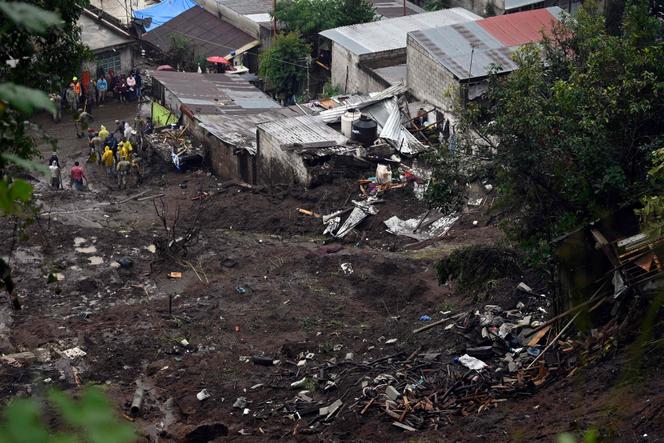Eastern and central Mexico are grappling with the aftermath of one of the most devastating natural disasters in recent memory, as historic floods and landslides have battered Puebla and neighboring states. The relentless rains, triggered by the remnants of Tropical Storms Priscilla and Raymond between October 6 and 9, 2025, have left a trail of destruction, heartbreak, and urgent questions about disaster preparedness.
Torrential Rains Unleash Chaos
Over just a few days,
Puebla was inundated with more than 20 inches (530 mm) of rain, overwhelming rivers and triggering deadly landslides. The state saw
around 80,000 people affected, with
38 municipalities and roughly 16,000 homes sustaining damage. The human toll is staggering:
at least 18 people have died and 13 remain missing in Puebla alone, while rescue teams scrambled to save residents stranded on rooftops and in isolated villages.
The disaster didn’t spare critical infrastructure. A gas pipeline ruptured following a landslide, and
308 schools and 59 medical facilities were damaged or rendered inoperable. Roads and bridges—about 1,000 kilometers’ worth—were washed out, cutting off more than 100 communities for days.
A Region in Crisis
Puebla’s plight is mirrored across the region. Neighboring Veracruz, Hidalgo, Querétaro, and San Luis Potosí also suffered catastrophic losses. In total,
over 76 people have died and at least 27 are missing across the five hardest-hit states. The flooding has displaced tens of thousands, with
over 300,000 affected in Veracruz alone and more than 100,000 homes damaged in Hidalgo.
The scale of the disaster has overwhelmed local resources.
More than 130 temporary shelters have been opened in Puebla, and over 700 hospital patients were evacuated from flooded facilities. In some areas, water levels reached as high as 13 feet, submerging entire neighborhoods and leaving behind mountains of debris and mud.
Government Response and Public Outcry
The federal government deployed
over 10,000 military personnel to assist with rescue and relief operations, focusing on areas where roads were blocked and communities isolated. President Claudia Sheinbaum held emergency meetings with governors of the affected states, promising that “cleaning work will be carried out with full scope, without wasting any resources.” She visited the hardest-hit cities, including Huauchinango in Puebla, to oversee relief efforts firsthand.
Despite these actions, the government has faced criticism for the speed and effectiveness of its response. Some commentators and media outlets have pointed to the earlier dissolution of Mexico’s Natural Disaster Fund (FONDEN) as a factor hampering relief efforts. Scientists and activists are calling for better climate change planning and improved early warning systems, warning that extreme weather events are likely to become more frequent.
Stories of Survival and Loss
Behind the statistics are countless stories of resilience and tragedy. In Puebla, rescue teams worked around the clock to reach people trapped by landslides and rising waters. In one harrowing incident, a landslide ruptured a gas pipeline, forcing the evacuation of entire neighborhoods. Many families have lost everything—homes, livelihoods, and loved ones.
Local communities have rallied to support each other, with volunteers distributing food, water, and clothing to those in need. Yet, as the waters recede, the scale of the rebuilding effort is becoming clear. Thousands face months, if not years, of recovery.
What’s Next for Puebla and Mexico?
As emergency crews continue to search for the missing and restore basic services, attention is turning to the long-term challenges. Rebuilding homes, schools, and hospitals will require massive investment. There are growing calls for the government to reinstate disaster funds and invest in infrastructure that can withstand future storms.
For now, Puebla and its neighbors are focused on survival and solidarity. The floods of October 2025 will be remembered not just for their destruction, but for the resilience of the communities that endured them—and the urgent lessons they offer for a changing climate.
Sources
1. Mexico Flooding October 2025 - Serve Source
2. [PDF] Education and New Developments 2025 - Volume 2 - ERIC
3. October 2025 Mexico floods and landslides - Wikipedia
4. [PDF] DIAGNÓSTICO TECNOLÓGICO EN UNA EMPRESA AUTOMOTRIZ
5. Heavy rains and storms cause devastating flooding and landslides ...
6. [PDF] Untitled - Przedsiębiorczość i Zarządzanie
7. Mexico's devastating floods have left 72 dead
8. [PDF] END 2025 Book of Abstracts
9. Mexico - Floods and landslides, update (UNOCHA, NOAA-CPC ...
10. Free Football Betting Tips for Today and the Weekend
11. People's Mañanera October 22 - Mexico Solidarity Media
12. [PDF] N° 2 – 2002 SUMMARIUM ASSEMBLEA PLENARIA 2
